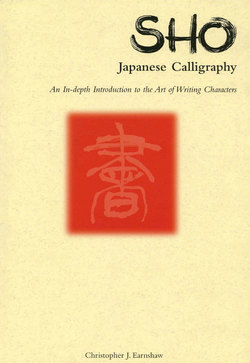Читать книгу Sho Japanese Calligraphy - Christopher J. Earnshaw - Страница 8
На сайте Литреса книга снята с продажи.
ОглавлениеA Foreword
Working the inkstick slowly backwards and forwards on the inkstone, I study what I am going to write. My eyes drink in the slender lines, the power, the rhythm, and the vitality there. Already in my mind’s eye an invisible brush is forming the characters on the untouched paper.
Facing the paper and reaching for the brush I experience a calm, relaxed feeling. My whole being is concentrated on the small square of paper and as I contemplate the possibilities of form, balance and rhythm open to me, the paper seems to grow in size. I write one copy and then another and soon the brush has become an extension of my inner self. The brush translates into black and white through the simple medium of a line, a form many artists cannot express even with a rainbow of colours on their palette. Being totally engrossed in the potential and the problems of constructing the character, the sensation of time just slips away. I write thirty or forty copies and my subconscious quietly ascends a crescendo of excitement as I near the goal. Finally I have it. A copy that is perfect in form and bursting with energy. Each tittle I look at it I see that my feelings of the moment have been put down on paper for eternity. This feeling communicates itself not only to me but to others as well. The better the writing, the more understandable my expression.
This passage may seem very difficult to comprehend now, but the more you practice the more vivid its meaning will become. In this book I intend to introduce the reader to the method and show the way to a full appreciation of calligraphy in its many forms, both Japanese and Chinese. I expect that he will in the end be able to create meaningful works of art himself. Calligraphy is very rewarding not just on an artistic level, but also in a spiritual sense. Many of those who have had experience in Zen meditation, myself included, confirm the analogy. Indeed many of the most famous practitioners during calligraphy’s 3,500 year history, have been priests.
Calligraphy, a major art encountered every day in the Far East, has been largely overlooked by western visitors in search of Asian culture. Calligraphy is not merely the exercise in good handwriting that many people believe it to be, but rather the foremost art form of the Orient. The Tea Ceremony Sadō and Flower Arranging Kadō are, being quite accessible to outsiders, the best known. The object of the Tea Ceremony is in the experience of a moment and that of Flower Arranging in creating a work that lasts a few days, but in calligraphy shodō, the peak of the moment and the enduring pleasure of days are combined.
Let me now guide your brush from the simplest examples to a place where you can write with fluency and confidence. First though you must learn the fundamentals and then you can venture on with your own creations.
